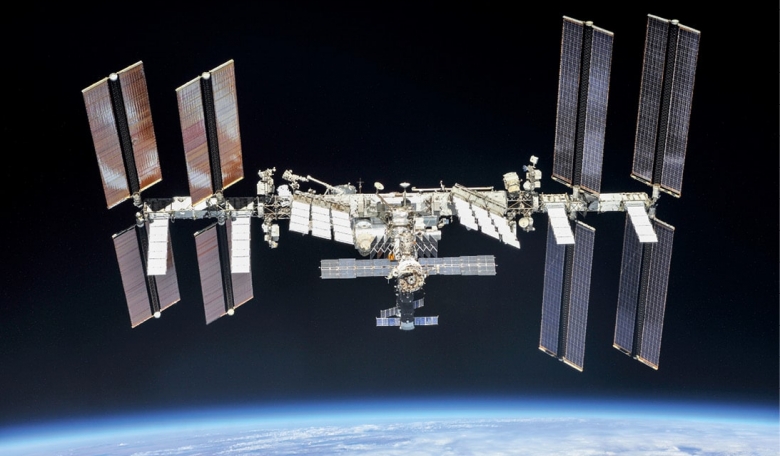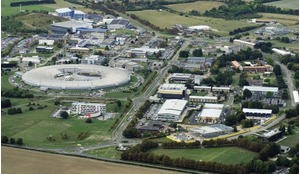Highly sophisticated materials and engineering are crucial for the success of missions for space exploration and settlement. Here, Tommaso Ghidini, head of the Structures, Mechanisms and Materials Division of the European Space Agency (ESA) guides readers through the extreme properties that materials used for space missions must possess.
In photos snapped by spacewalkers, space looks like the most tranquil environment imaginable: absolute stillness bathed in even sunlight, receding out to endless, star-dotted blackness. That is an illusion. From Earth orbit to deep space and the planetary surfaces beyond, space missions involve exposure to some of the most demanding and hostile operational environments in which human engineering products are required to function.
The scope of a given mission dictates the particular environmental parameters it will face. A low-orbiting Earth observation mission faces very different constraints from a geostationary telecommunications satellite, or an exploration mission out to deep space - or still more a planetary lander. Specialist engineers work to ensure that the materials, mechanical parts and processes used to manufacture a spacecraft or a rocket satisfy both ground and flight functional requirements and constraints of the mission. Their selection must guarantee high reliability despite the extremely aggressive conditions around them while performing very complex and sophisticated tasks.
Materials and processes are chosen by prioritising those already successfully used for identical or very similar applications in other space missions - in terms of environment constraints and mission lifetime - and those for which satisfactory evaluations are obtained in tests that simulate various aspects of space, as well as those included in approved data sources, including ESA and NASA databases.
The first challenges for spacecraft materials actually start on Earth. High mechanical loads on structural materials, electronic components and propulsion systems are induced during the manufacturing and assembly stages. Poor workmanship or inappropriate storage can generate cracks, residual stresses, internal defects, corrosion, contamination and local damage. The highest loading phase of the overall space mission also occurs on the ground, particularly during static, acoustic and dynamic qualification testing. Loading and risks of contamination or corrosion also occur during transport, whether wheeled, by boat or plane.
Space missions involve exposure to some of the most demanding and hostile operational environments in which human engineering products are required to function
Arrival at the launch site means exposure to humidity - especially in French Guiana and Florida - and presence of chemical substances such as cleaning agents and solvents, propellant and oxidisers or hydraulic fluids, known to promote aggressive corrosion and stress corrosion cracking. The liftoff and launch generates significantly high vibrations, acoustic shock levels and thermal fluxes. Lightning and bird-strikes are also possibilities.
Once in orbit, gravity - hence loading - and atmosphere are no longer an issue. In their place, spacecraft materials are exposed on a sustained basis to the nothingness that is space-quality vacuum. The effects can be dramatic: ceramic/oxide layers and polymeric materials can undergo desorption of water and outgassing of organic materials or organic residues entrapped in inorganic layers. Water desorption can have a weakening impact on layer structure, therefore modifying the electrical and thermo/optical properties of materials. Outgassing can lead to the condensation of the ensuing cloud on spacecraft surfaces, affecting their scientific performance all the way up to instrument ‘blindness’. This unwanted material-generated atmosphere around a spacecraft can also cause electrostatic discharge (electrical effects similar to a lightning strike) and short circuits.
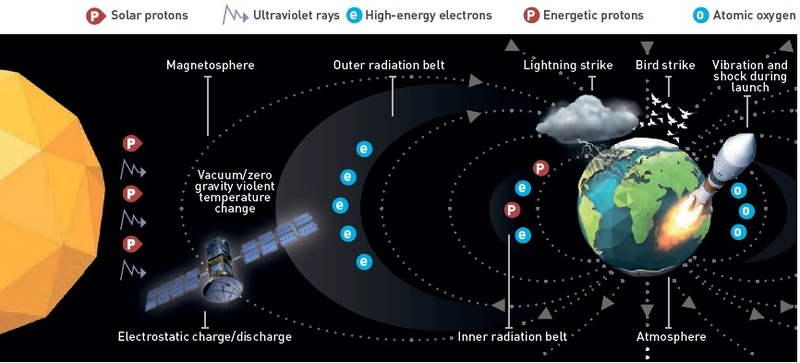
Radiation effects
A spacecraft in orbit is also exposed to the wider universe. Solar and cosmic radiation can degrade surface treatments, leading to micro-cracks and flaking off. Polymeric materials as well as paints, varnishes and coating are considerably sensitive to radiation, with detrimental effects including peel-off, colour change and crazing. Irradiation can form new chemical bonds, resulting in irreversible changes such as changes in appearance, in chemical and physical states and mechanical properties. The colour, emissivity and refractive index of instrument lenses may also be changed.
Radiation has an additional impact on semiconductors and electronic devices. Energetic particles displace silicon atoms from their proper crystal lattice locations, creating crystal defects, changing the electrical properties of the device and leading to circuit failure. This is particularly crucial for solar panels where displacement damage effects gradually reduce their power output. Radiation can also modify the intrinsic electrical properties of surface treatments, compromising their insulation characteristics.
The vacuum of space is a place where it is possible to be hot and cold at the same time, if you are both in sunlight and shade. In orbit around Earth, spacecraft materials are exposed to temperatures varying between approximately -180 C to +180 C. Such repeated thermal variations cause thermal stresses, leading to cracking, lack of adherence and flaking away of surface layers and ultimately electronic assemblies.
Correspondingly, for missions beyond Earth, extremely low or high temperatures as well as increased temperature ranges can occur. For example, the Jupiter Icy Moons Explorer (JUICE) will perform detailed investigations of the Jupiter system at extremely low temperatures (even colder than -200 C at Jupiter arrival, and during solar eclipses). Contrarily, Solar Orbiter will perform in-situ and direct remote sensing measurements of the Sun at a closer distance than ever before for a European mission, reaching temperatures as high as 520 C.
An additional threat in low Earth orbit - at altitudes between 200 km and 700 km - is exposure to atomic oxygen. These are individual atoms of oxygen at the fringes of the atmosphere, the result of standard oxygen molecules of the kind found just above the ground being broken apart by powerful ultraviolet radiation from the Sun. The main effect is the erosion of materials and coatings, first noted in the early 1980s when engineers found Space Shuttle thermal blankets had been severely eroded during flight.
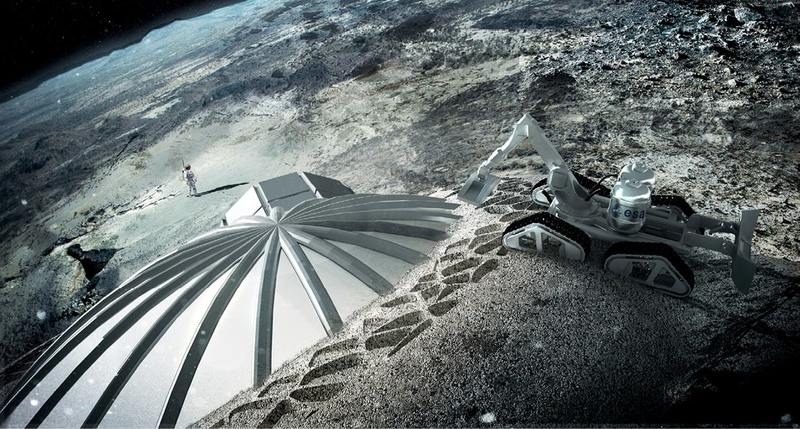 A bold concept to construct a multi-dome lunar base using a 3D printing concept. Once assembled, inflated domes are covered with a layer of 3D-printed lunar regolith by robots to help protect the occupants against space radiation and micrometeoroids.
A bold concept to construct a multi-dome lunar base using a 3D printing concept. Once assembled, inflated domes are covered with a layer of 3D-printed lunar regolith by robots to help protect the occupants against space radiation and micrometeoroids.
Orbital debris
An additional threat in low Earth orbit - at altitudes between 200 km and 700 km - is exposure to atomic oxygen, individual atoms of oxygen at the fringes of the atmosphereESA
It is important to note also that the space around Earth is not entirely empty: damage may be caused by hypervelocity impact collisions with natural micrometeoroids, such as dust and rocks, or human-made orbital debris including metallic fragments, paint chips and components from old spacecraft.
A small fraction of the micrometeroid and orbital debris (MMOD) population is large enough to cause serious, potentially catastrophic damage by colliding with a spacecraft. The largest MMOD items can be tracked from Earth, but MMOD too small to be tracked but large enough to present a danger also exist. Beyond Earth orbit the risk is substantially lower, but the danger of micrometeoroids is largely unquantified and may pose a risk for long distance missions - including human exploration of Mars.
A very peculiar environment in space is that of the International Space Station (ISS) at 400 km altitude. Although designed to support up to six astronauts, the presence of breathable air, water, organic materials and human activity can negatively affect the materials properties of the ISS habitation modules. Damage can occur in the form of corrosion, stress-corrosion, friction, fire and wear as well as biological growth - famously the Mir station, ISS’s predecessor, had surfaces pitted by fungi and mould.
The single most challenging environment a spacecraft will face is during reentry, either to Earth - in the form of a reusable or crewed vehicle - or as a landing vehicle delivering robots and/or astronauts to planetary surfaces. During this phase, materials must resist extremely high temperature and atmospheric dynamic pressure. The erosion/corrosion mechanism generated by the very high aerothermodynamics heat fluxes and friction with the atmosphere must be controlled. Moreover, for reusable spacecraft such as ESA’s SpaceRider, this performance has to be guaranteed over a number of reentries.
The materials and processes used for space hardware manufacturing are confronted with unique challenges and limitations: the omnipresent need for low mass must be combined with very high reliability and performance of the final product, with no repair/maintenance option. The rather small production series and small production volumes typical of the space sector already place limitations on the availability of tailored alloys and associated manufacturing processes.
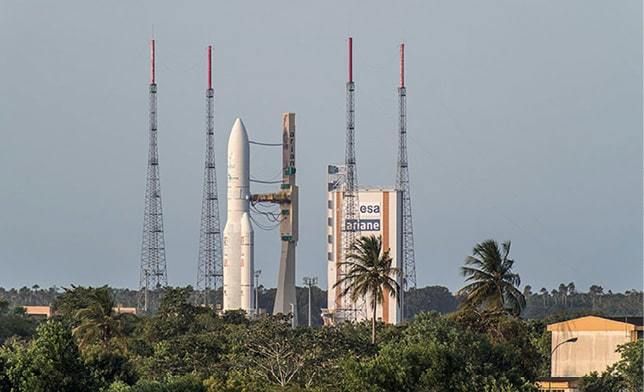 Corrosion at tropical launch sites such as the European spacecport in French Guiana is a major problem for engineers.
Corrosion at tropical launch sites such as the European spacecport in French Guiana is a major problem for engineers.
The European Union’s REACH (Registration, Evaluation, Authorisation and Restriction of Chemicals) and RoHS (Restriction of Hazardous Substances) regulations further restrict already challenging supply chains, reducing the availability of suitable and sustainable technologies. The high cost of qualifying new materials and processes means established players with heritage manufacturing concepts dominate the supply chain.
Yet change is in the air. The larger production volumes required for forthcoming satellite megaconstellations and rocket manufacturing are benefiting from the spinning-in of terrestrial ‘Industry 4.0’ initiatives from the automotive and aeronautical sectors such as digitisation and ‘smart factories’ production line simulation, hazard monitoring, predictive maintenance and big data-driven quality control. And advanced non-space manufacturing processes are being harnessed for space through ESA’s Advanced Manufacturing cross-cutting initiative.
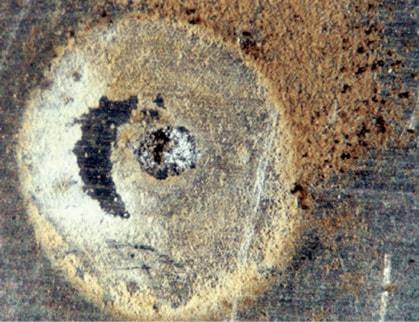 Fungi/bacteria and severe corrosion and microbiological damage to aluminum in the International Space Station.
Fungi/bacteria and severe corrosion and microbiological damage to aluminum in the International Space Station.
Key enabling technology
Additive manufacturing (AM) - otherwise known as 3D printing - is the leading example, often described as the ‘third industrial revolution’ and compared to the internet in terms of its disruptive impact on everyday life. AM for space hardware manufacturing enables direct design for performance as opposed to design for manufacturing, opening the way to completely new, optimised shapes that are not achievable with any conventional manufacturing processes. Mass savings of more than 50 percent are possible and up to 95 percent have been achieved for selected parts, reducing the number of interfaces and associated controls and slashing the lead-time by months. AM includes a large family of processes and technologies and can be applied to a wide range of materials from polymers, metals and ceramics to food, living cells and organs.
The high cost of qualifying new materials and processes means that established players with heritage manufacturing concepts dominate the supply chain
Looking ahead, AM is set to be a key enabling technology for crewed, long-duration space missions and extraterrestrial planetary settlement. ‘Living off the land’ will be essential: local resources and systemic recycling will be used for local manufacturing and repair of life support infrastructure as well as scientific and functional equipment. ESA has already developed an aerospace-quality plastic 3D printer for operation in weightlessness that is able to recycle used plastic. And the use of local materials has also been demonstrated: a 1.5 tonne building block has been printed using simulated lunar regolith. Up in orbit, 3D printers for polymers are already present on the ISS and a metallic printer is set to join them.
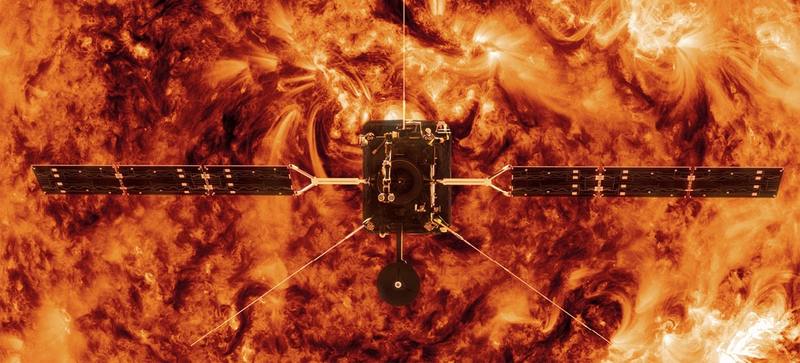 Artist impression of ESA’s Solar Orbiter in front of the Sun (not to scale). It will perform in-situ and direct remote sensing measurements of the Sun at a closer distance than ever before for a European mission, reaching temperatures as high as 520 C.
Artist impression of ESA’s Solar Orbiter in front of the Sun (not to scale). It will perform in-situ and direct remote sensing measurements of the Sun at a closer distance than ever before for a European mission, reaching temperatures as high as 520 C.
Down on the ground, the current focus for the safe use of AM for space applications is devoted to powder control quality, with the definition of a space-grade powder procurement specification, in-situ process monitoring and control of the post-processing surface treatment and verification strategies well underway. Literature results show that AM processes are in line or even better than casting processes. Future technology developments include 4D printing - namely AM applied to shape memory alloys to change shape in space, allowing the creation of retractable booms or antennas.
The chance is there, through AM and parallel manufacturing breakthroughs, to reshape the supply chain of the European space sector. These new technologies allow the creation of advanced and highly competitive space products while also optimising existing industrial processes. The scope of ESA’s Advanced Manufacturing initiative is to identify innovative manufacturing processes across the European industrial landscape and introduce them as integral parts of the development process for future space missions. This will allow faster and more cost-efficient entry to the market with globally competitive space products, and large economic repercussions in many non-space industrial sectors.
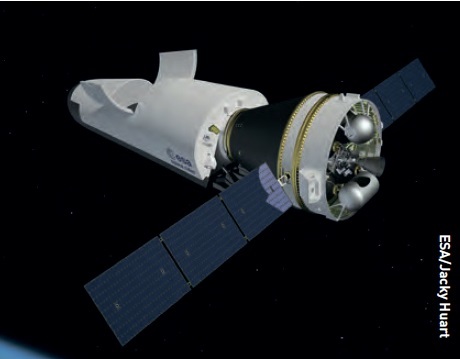 ESA’s Space Rider aims to provide Europe with an affordable, independent and reusable end-to-end integrated system for routine access and return from low orbit. It will be used to transport payloads for an array of applications, orbit altitudes and inclinations.
ESA’s Space Rider aims to provide Europe with an affordable, independent and reusable end-to-end integrated system for routine access and return from low orbit. It will be used to transport payloads for an array of applications, orbit altitudes and inclinations.
About the author
Dr Tommaso Ghidini is the Head of the Structures, Mechanisms and Materials Division at the European Space Agency. With its world class laboratories and computational centres, the Division guarantees the structural integrity of the entire range of ESA Space programmes and missions. After obtaining a PhD in Germany, and before joining ESA, Dr Ghidini worked for AIRBUS on major civil and military programmes of the European aeronautical industry including the A380, A350 and A400M aircraft. He has received a number of international awards for major aerospace industrial achievements and developments and is invited to lecture in some of the most prestigious European universities.
Acknowledgment
This article is based on commentary originally published in the journal Nature, Volume 17 Issue 10, October 2018.





